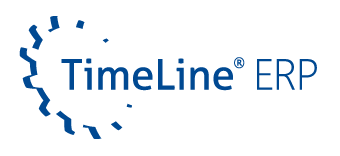Properly calculate and reduce ERP system costs
How ERP software costs are broken down – and how you can save
More than ever, digitalization is forcing companies to restructure their processes and connect departments. A good solution for this is an Enterprise Resource Planning (ERP) system. Naturally, companies wonder how much ERP systems cost. The good news is that not all the costs of an ERP implementation are set in stone. There is a variable portion of ERP software costs that you can control. In this article, you will learn how ERP costs are made up, how to identify cost drivers, and tips for saving money during an ERP implementation.
What exactly does the cost of an ERP system consist of?
First of all, we should clarify how the cost of an ERP implementation is made up. If you know this and are aware of the factors that can have a negative impact on the cost of an ERP system, you will have more opportunities to influence its development. Depending on the scope of the processes to be covered, the price of the ERP system is made up of different factors. For example, which modules or how many workstations you need are taken into account. However, because pricing models vary from company to company, it is difficult to make general statements about the actual cost of an ERP system. In general, however, it can be said that the costs are made up of two areas:
- ERP software license costs: Software license costs account for about 50 percent of the total ERP system cost. Unfortunately, these costs cannot be reduced and should always be budgeted in full.
- ERP services costs: The other 50 percent of ERP costs are services. These are variable and therefore controllable. Services include customization, consulting and services, and training for key users and end users.
What are the ERP system costs for services?
How much of your budget is spent on customizing, consulting and training depends on how closely you work with the standard. Whether it is an ERP workshop, conceptual design, coordination meetings, programming, data transfer, reporting, or training, as a customer you have an impact on all services. Of course, you should not do without these services. Consulting, training, and technical customization are undoubtedly important to adapt the ERP system to your company’s needs and processes, and to familiarize your employees with the system.
How can you reduce ERP system costs?
With good preparation, you can significantly reduce the cost of ERP systems in the service sector. Your help is needed! Unfortunately, it is not always possible to completely avoid unwanted costs. Sometimes, even with an ERP workshop and specifications, certain items are difficult to estimate. These become apparent only in the course of the project. However, there are also cost drivers that can be avoided with good preparation.
5 Tips for lower ERP system costs
Tip 1: Have clear goals and specific requirements
When you decide to implement an ERP system, you probably have a rough idea of how it will improve your processes. However, many companies are very vague about their goals. They often want to implement everything that is possible, in the spirit of “every feature will come in handy someday”. The problem with this approach is that it is difficult to calculate the cost of ERP software.
If requirements are vaguely defined and problems are only scratched on the surface without questioning possible causes, the project is on shaky ground from the start. The result becomes apparent at the latest when the specifications are written. Then you have no choice but to work with what people want – and that can lead to delays and complications.
Therefore, you should formulate clear objectives and specific requirements at the outset, so that an ERP system is created that meets your needs – and your budget. This will enable the vendor to select the right ERP system, ensure a successful ERP implementation and avoid unnecessary additional costs.

Tip 2: Balance project management and departments
Another factor in high ERP software costs can be the behavior of individual departments combined with weak project management. Often, individual employees or departments have more freedom than others. They are used to pushing through their plans and making few compromises. Then every idea, no matter how small, has to be implemented – be it an evaluation, a list, or a request.
Add to this a project manager who just gives in and approves all requests, and you, as the decision maker, will soon find yourself with a long list of requests, needs and ideas from your employees – and a correspondingly high ERP system cost. To keep costs in check, you need strong project management that can sometimes reject employee suggestions.
Of course, suggestions from employees should be taken seriously, as they are in the best position to judge which features are beneficial. A good way to do this is to keep a list of all the customization requests that employees make, and continue to use the standard queries for the time being. After some time in the field, it will become clear whether further customization makes sense or whether the desired items have become superfluous.
Learn how to build a strong project team here:
- What qualities should a project manager have?
- What are the responsibilities of a project manager? A Guide
Tip 3: Prepare data accurately
The database is the foundation of an ERP system. The first step in any ERP implementation is to determine what data will be transferred to the new system. This is usually master data. However, everyone has a different definition of master data, so you should determine in advance what data will be transferred – and verify that it is current. That way, you start with fresh data and can get the most out of the software without having to worry about making adjustments later. This can significantly reduce the cost of your ERP system.
Learn how to prepare data well here:
- How to Define Data Maintenance Criteria
Tip 4: Train users properly
You need to budget part of the cost of the ERP system for training the relevant users. How much these costs will be depends on two factors. First, which and how many modules will be used, and second, how many people will need to be trained and how often. Obviously, the greater the number of modules, the more time-consuming the training will be. Experience has shown that a younger age structure requires less training than an older one. Young, PC-savvy people often only need to be trained once, while older people need to be trained more often.
For more useful information on training, click here:
- Why ERP Training Makes Sense
Tip 5: Prioritize your ERP project
Many companies think that implementing an ERP system is a project that runs parallel to the day-to-day business and does not require many resources. You should let go of this idea. The project is not a service that you hire your ERP vendor to provide and then get out of its way. It is about your processes and your people.
If you do not give the project the attention it deserves, it will be delayed – and this will most likely be reflected in high ERP system costs. Every additional meeting, every postponed appointment, and every trip by the ERP consultant will increase the cost of the ERP software. Your cooperation is required to ensure that the implementation goes as smoothly as possible and that your costs do not increase unnecessarily.
Customer projects often take precedence over ERP projects. The project team consists of inexperienced people because the experienced people are needed elsewhere. From your point of view, this may make sense – after all, the customer brings revenue to your company, while the ERP project costs you resources. However, this approach usually leads to additional costs because inexperienced employees often make mistakes that can be avoided. The principle is simple: the more priority you give to the project, the faster you can implement the ERP software – and the lower the ERP implementation costs will be in the end.
Conclusion: how to reduce ERP system costs
Implementing an ERP system comes with a high initial cost. The software comes with many standard features, but no system can be perfectly tailored to your needs from the start. Customization is important to ensure that your processes are fully supported and covered. However, only half of the cost of an ERP system is fixed, and you should take advantage of that.
If you keep these points in mind, nothing stands in the way of a successful – and affordable – ERP project:
- Good preparation and cooperation – with a detailed requirements analysis you can avoid later adjustments. Be as specific as possible about what you want the system to do.
- Strong project management helps keep implementation costs in check. Appoint a person to keep an eye on costs and keep a firm line with the staff.
- Carefully prepared data reduces the need for rework and improves performance.
- Training costs can be reduced by choosing users and modules wisely.
- The more attention you pay to the project, the lower the costs will be in the end.
If you would like to learn more about ERP system costs and your options for reducing them, please send us a message using the contact form, write to [email protected] or contact our sales team at +49 212 230 35 200. We will be happy to advise you!







